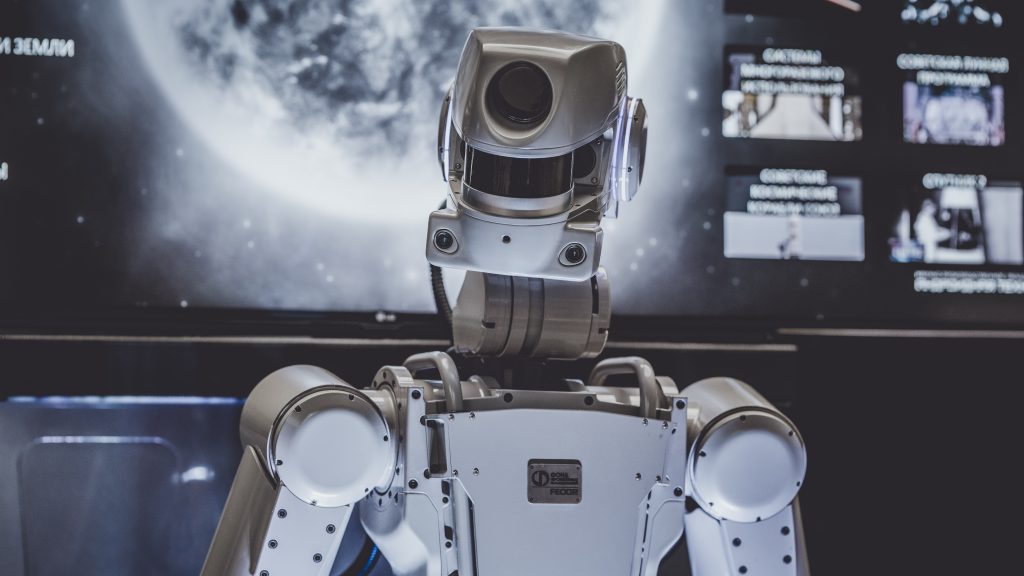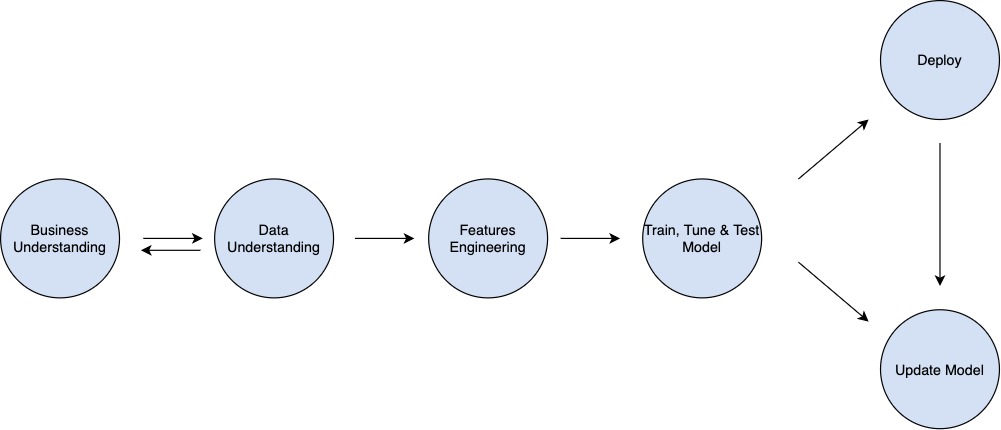
From 2010 to 2020, machine learning (ML) has shown its value by providing a number of breakthroughs in a diverse range of fields. Machine learning has gone beyond research groups and made its way into the enterprise. According to a LinkedIn report, the hiring rate for ML specialists grew to 74% annually from 2016 to 2020. While demand for intelligent systems is growing, many businesses do not have enough human resources or experts to keep up with the high demand for intelligent systems.
Given the scarcity of ML experts, automated machine learning (AutoML) is a source of relief for many organizations. AutoML is rapidly democratizing machine learning tools and boosting productivity, as it enables machine learning engineers, data scientists, data analysts, and even non-technical users to automate repetitive and manual machine learning tasks.
The traditional ML process is tedious, human-dependent, and repetitive. While data scientists are most sought after, the job is not as alluring as it may seem. In reality, data scientists and analysts spend 60–80% of their time cleaning, sourcing, and preparing data for the actual work- model building.
For example, say Company A wants to use ML algorithms for time-series predictions of sales prices using data from the past few years. With traditional ML methods, data scientists at Company A need to understand the data, clean it up, engineer features, try out features and model testing, and spend a considerable amount of time squeezing out a few percentage points of accuracy. This is a monotonous and time-consuming process. AutoML, however, allows data scientists at Company A to quickly outsource the tasks to machines and get a working model on time.
Steps in machine learning projects

Advantages of AutoML
Technology is to enable the business and not the other way around. If you’re a data scientist or analyst, your time is best invested in focusing on business problems rather than getting lost in the workflow and process. AutoML is changing the way businesses approach machine learning problems due to its many benefits.
It Saves You Time
No one is born with the instinct to predict the best algorithm and hyperparameters for solving a problem. Instead, we manually test models, tune hyperparameters, and evaluate models to arrive at the best model for a particular problem. AutoML abstracts this manual work away from you. AutoML helps you transfer your data to the training algorithm and automatically search for the best neutral network architecture for your problem, thus saving you time. With AutoML, you can get results in as little as 15 minutes as opposed to hours.
It Bridges Skill Gaps
Businesses are well aware of the need for intelligent systems in order to compete on a global scale. But companies are faced with many challenges, among them, sourcing talent. There is an increasing demand across a wide range of applications for ML engineers, data scientists with skills that businesses often find difficult to fill. AutoML addresses this skill gap. It makes building and serving ML models easy by automating some of the time-consuming steps in an ML pipeline regardless of your skills.
Improved Scalability
Some emerging ML models are capable of mimicking specific human learning processes, and AutoML allows you to apply this at scale. This enables you to devote more time to business problems rather than iterative modeling tasks. AutoML offerings like AutoML Tables allows you to deploy state-of-the-art ML models at increased speed and scale.
Increased Productivity
AutoML simplifies the process of applying ML to real-world problems. It streamlines all the steps required to solve business challenges by reducing the complexity of developing, testing, and deploying machine learning frameworks, thus boosting productivity. It provides a UI for non-technical users as well as a complete set of APIs that can be used in automation.
Reduced Errors in Applying ML Algorithms
As businesses grow, the industry trends evolve and the amount of data expands. AutoML leads to better models by reducing the possibility of inaccuracies that might arise due to bias or human error. With this advantage, businesses can innovate with confidence, achieve a higher degree of accuracy, generate business benefits, and achieve higher ROI on ML projects.
Considering these benefits, the next question would be where AutoML should be applied.
AutoML Use Cases
Following are some typical business problems AutoML can be applied to.
Time-Series Forecasting
Machine learning engineers and data scientists use time-series forecasting to predict future events by analyzing data and a series of observed values ordered through time. Time-series analysis can be a laborious and complicated process due to the challenge of finding the most influential signal and the impacts of many historical events on current or future predictions.
These models need to be manually rebuilt and updated as the environment changes. But AutoML is able to automate the entire forecasting process, including feature engineering for discovering predictive signals, hyperparameter tuning, model selection, and more.
AutoML can automatically detect noise, seasonality, stationarity, and trends. It transforms the dependent variable and implements backtesting to improve ML model performance and accuracy. Automated time-series forecasting use cases range from staffing and network quality analysis to demand at stock-keeping unit (SKU) level, inventory, log analysis for data center operations, and business operations for sales.
Classification Problems
A classification problem is a type of supervised learning that assigns a class (label) to a sample. Classification models predict a label from a fixed, distinct number of possible labels. Common classification examples include object detection, handwriting recognition, and fraud detection. Google AutoML Vision enables you to automatically build and deploy advanced classification ML models to derive insight from images.
Regression Problems
Similar to classification, regression problems are typical examples of supervised learning. Unlike classification models, a regression model predicts numeric values. Common regression examples include sales price prediction and house price prediction. Supervised learning services like AutoML Tables allow you to train a machine learning model on tabular data to make predictions on new data.
Feature Selection
Features are also known as predictors, and they’re essential to an ML model. Features often depend on ML algorithm choice, and if not correctly selected, they could affect scoring and model build time. The more the features increase, the higher the chances of slowing down the overall modeling process. AutoML can perform feature selection effectively by using an automated evaluation process to access the combination of strong and stable predictors that work best for an ML model.
Algorithm Selection
For an ML task, the process of finding an optimal algorithm can be daunting. However, you may infer the right algorithm by exploring a dataset. For instance, a yes/no classification problem might use any of the following algorithms: gradient boosted trees, decision tree, support vector machine (SVM), logistic regression, etc. Yet selecting the best modeling algorithm that gives the most accurate prediction can be an intensive process that involves significant tweaking and evaluation. AutoML-Zero uses an automation process to identify the models or algorithms most suitable for a given problem.
Model Tuning
Every ML algorithm has its own set of hyperparameters that produces the most accurate model. You can think of hyperparameters as the “knobs” of ML models. Hyperparameters are set manually, as they cannot be learned through model training. When you tune a model, you modify the hyperparameters through a trial-and-error process, which could be time-consuming. Arriving at the best hyperparameters for a given problem is a critical but lengthy process that typically requires manual evaluation and repetition. Despite the endless number of hyperparameter combinations, AutoML can automatically find the best set for a given algorithm or model.
Natural Language Processing
Civilization wouldn’t have been possible without language. Language is the cornerstone of our existence. We communicate and share ideas through languages. Everything we express verbally or in written form contains a great deal of information. The tone, word choice, and pauses all contribute to the depth and importance of the language. Advances in ML have led to machines that are able to read, understand, and derive meaning from languages and communicate back to you like humans. AutoML NLP gives you the power to build and deploy custom ML models that are capable of analyzing text documents, categorizing them, finding important information, or analyzing their sentiments.
Model Evaluation
Model evaluation is a technique used to validate an ML model’s performance. It’s not enough to train a model; you also need to know how the model generalizes on data. Can the model be trusted to make accurate predictions on data it was not trained with? Is there a chance of overfitting where a model fits perfectly with training data that is unable to generalize on test or unseen data? One way to determine whether a model is not overfitting or underfitting is through model evaluation. AutoML can automatically access and evaluate an ML model’s efficiency against a given set of evaluation metrics.
AutoML for the Enterprise
From computer vision to automatically building models on any structured data, Google has been growing its enterprise AutoML offerings since Google made its first AutoML announcement in 2017. One such offering is in the computer vision field. Computer vision generally deals with making computers understand images and videos and then drawing useful information from them. The ability to teach computers to have a human understanding of objects, pictures, and videos make technologies like autonomous cars a reality. Google’s AutoML Vision and AutoML Video allow enterprises to derive insights from images at scale.
Enterprises accumulate data at a fast pace, according to some sources as much as 2.5 quintillion bytes of data each day per person. Handling massive amounts of data generated by the enterprise can be challenging in and of itself let alone having to build an intelligent system on the data. AutoML Tables allows enterprise customers with huge amounts of structured data to build fast ML models at scale.
The struggle to implement end-to-end ML workflows is common in the enterprise because of the time and the knowledge required. But AutoML enterprise can derive more value from data without having a deep ML expertise and do so cheaply.
Conclusion
For organizations with a data science strategy, AutoML is an effective tool for enhancing data science workflows — particularly for teams that are lacking expert ML headcount. While it can improve models by automating repetitive ML tasks, AutoML is not a replacement for data science. A tool cannot compensate for lack of strategy.
If your organization needs to derive insight from your data but has trouble finding the right ML experts to fill in the gaps, AutoML can bridge this gap. AutoML can exponentially reduce the time and effort required to build time-series models for any organization.
CloudZone’s helps businesses grow by adopting state-of-the-art cloud technologies at minimal cost, while providing high quality Cloud solutions and services. Build predictive models effortlessly regardless of your cloud provider or technical expertise. Get started with CloudZone today.

